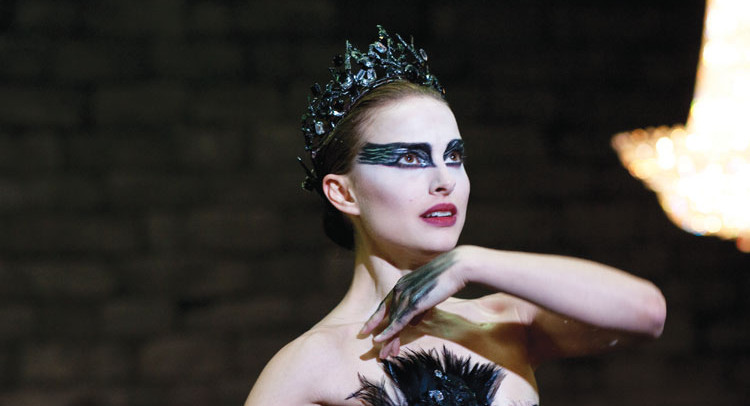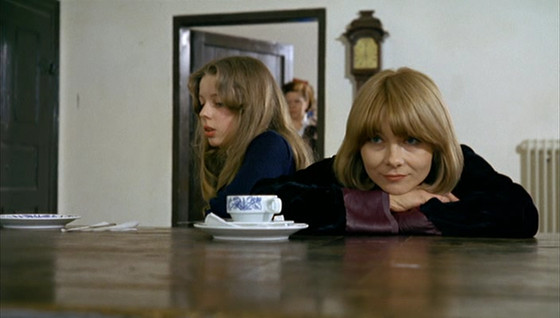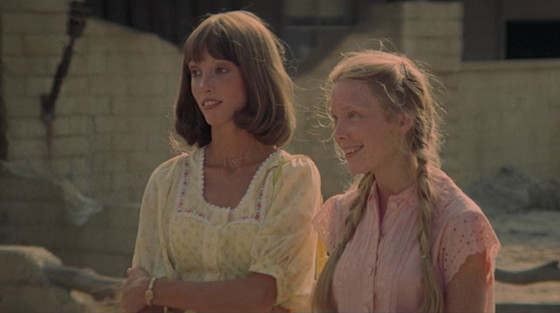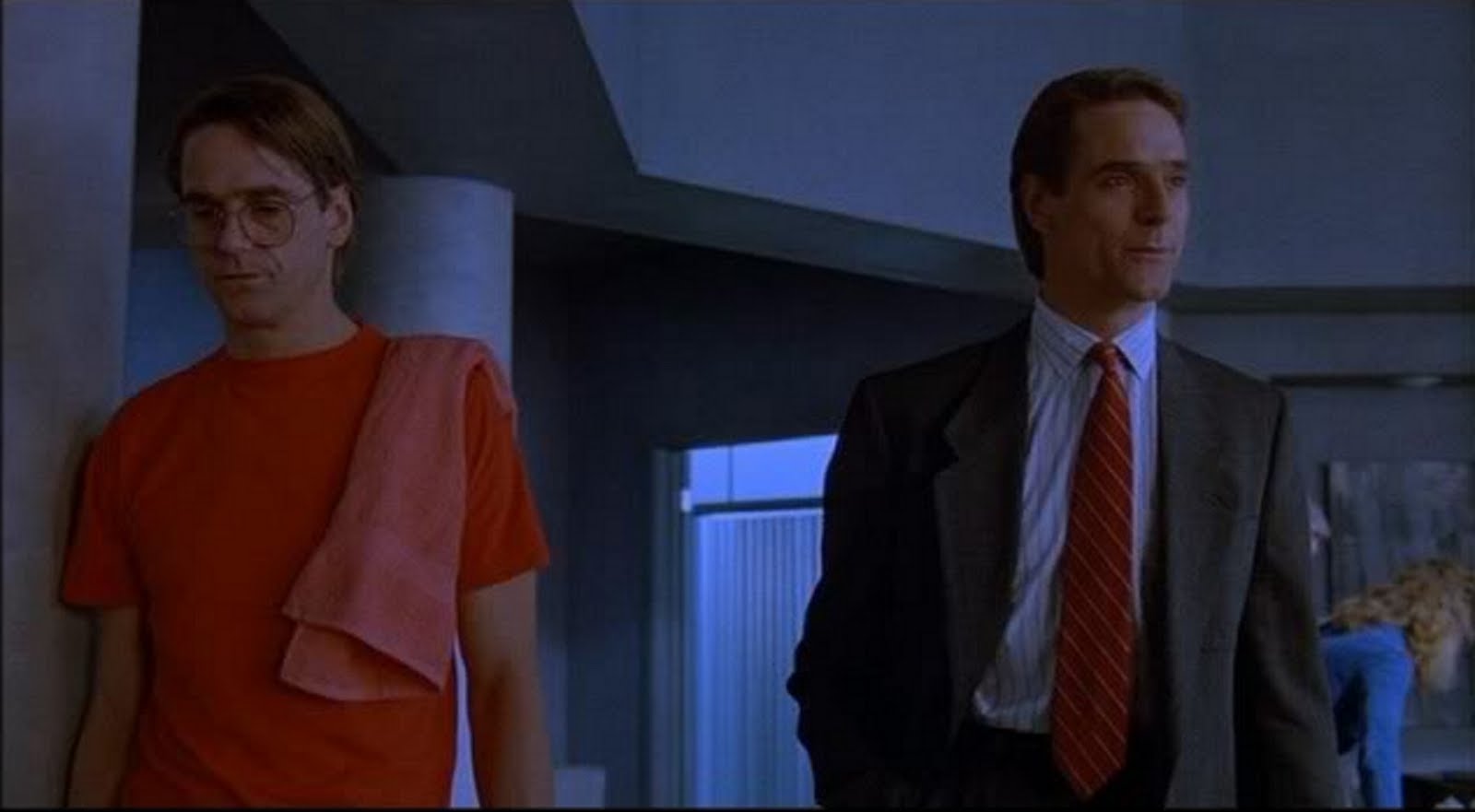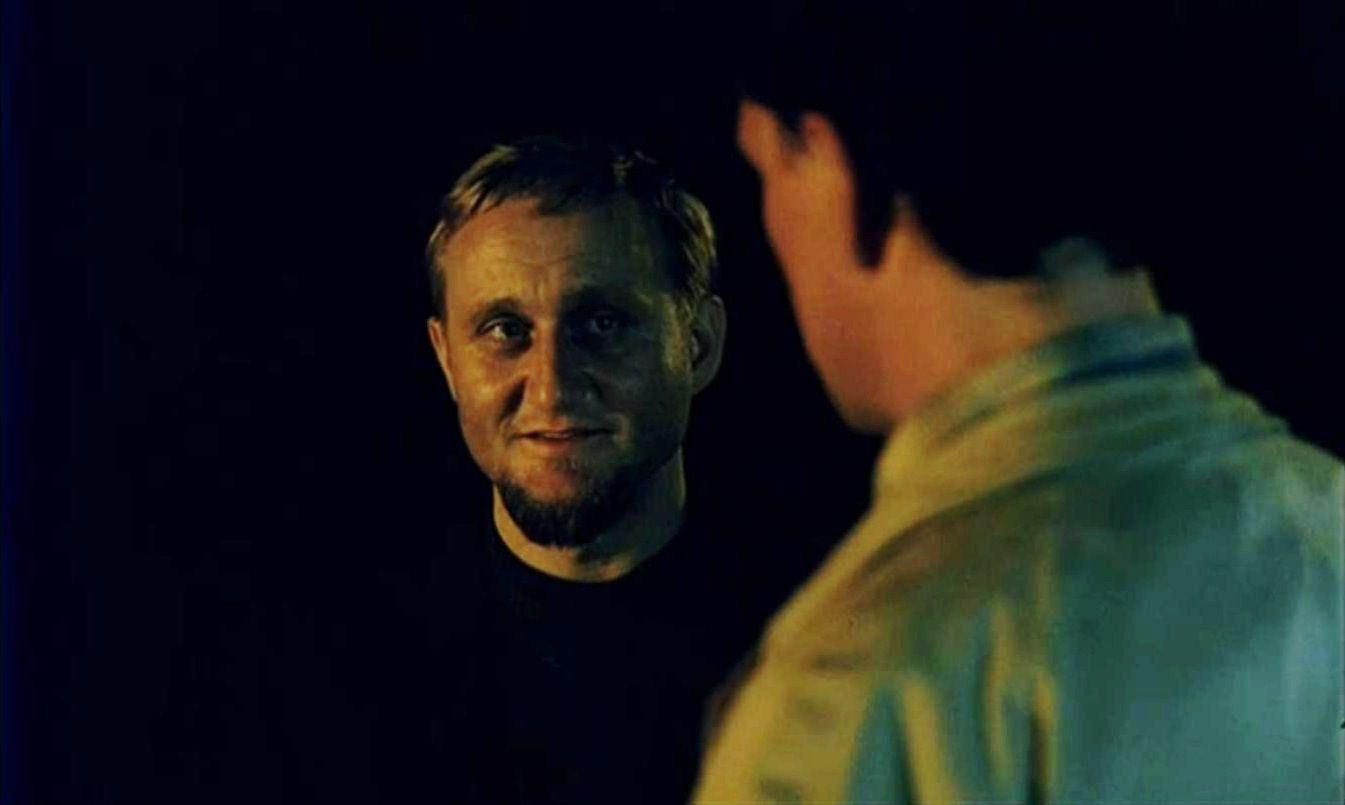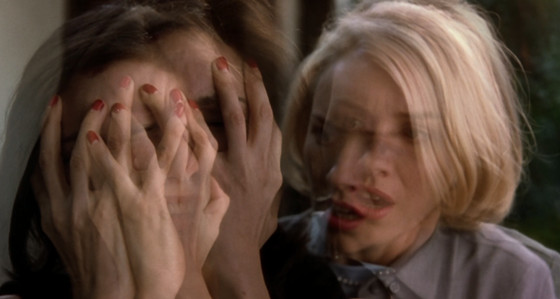8. Black Swan
Darren Aronofsky is a “filmmaker’s filmmaker,” an inspired aesthete with a lot of daring formal experimentation in his films. Everything from Pi to Requiem For A Dream and The Fountain – even Noah, a bit of a slog, offers a stunning visualization of the Creation myth. Black Swan is his most specific film in a number of ways, most notably for how much more its influences are worn on its sleeve.
Natalie Portman star as Nina, and her story is essentially a combination of the ballet “Swan Lake,” All About Eve and the Powell/Pressburger classic The Red Shoes. It reinvents elements from these works, and coats them in the thick, gaudy haze of a Brian De Palma thriller. Half of the pleasures of this film are in recognizing the pieces, but the performances help tether the film to a sense of reality in spite of its lurid melodrama.
Portman Is riveting, matched by equally memorable performances from Mila Kunis as her perceived competition/potential lover, Barbara Hershey as her overbearing mother, and Vincent Cassel as the stand-in for the male gaze. This film is sumptuous feast, a rich descent into madness that both borrows from and ultimately rivals the best of the genre.
7. Chinese Roulette
Reiner Werner Fassbinder is of the great German filmmakers of his generation, a fascinating public figure whose films were stark and honest and often ugly examinations of sadness, sexuality and self-pity. Chinese Roulette is one of his great, somewhat lesser talked about films.
A married couple, each engaging in an affair, lie to the other about their plans for the weekend in order to have an escape with their lovers. The problem is that they both have the idea to enjoy their weekend at their summer home, and the two couples are confronted with the truth. What occurs from here is a palpably destructive and ever-intensifying series of mind games, led on by their pre-teen daughter, who wants nothing more than to force them to confront their hypocrisies head-on.
The titular game is both suspenseful and horrible, an emotional brawl where no one may come out the winner. Fassbinder’s unflinching eye relishes the scenes, the dialogue, the arguments, the sordid stories. The Bitter Tears of Petra von Kant, perhaps his masterpiece, is a film that could have easily made this list, but Chinese Roulette is pure psychology, an examination of our words and our lies, and the denial of our baser instincts, and the ways in which our actions affect everyone else.
6. 3 Women
Famously based off of a dream of his, Robert Altman wrote the film claiming to never actually understand it. It is a strange, somewhat inexplicable film, but we can recognize the themes of self-identity that run through the veins of most of the films listed here. Pinky (Sissy Spacek in one of her best performances) starts a new job, and becomes enamored with Millie (Shelley Duvall), a more confident co-worker. When Millie is searching for a new roommate, Pinky jumps at it, and the film follows the intensifying obsession Pink has with Millie.
The thing is, Millie is not exactly what Pinky sees; she is very needy, and tries very hard to get others to like her. Pinky sees only those things in her that she wants for herself, and after a bizarre (but failed) suicide attempt, Pinky begins to slowly take over Millie’s personality. As she grows stronger, Millie seems to weaken, turning inward, into a version of the old Pinky.
This is a fairly common theme, this idea that we all influence one another’s personality in ways both big and small. When you see someone who possesses a quality you wish you had (for Pinky you could argue that is confidence, or maybe just being seen as “cool,” well-liked), you may unconsciously begin to mimic that person, only to take on other characteristics that may not be associated to the perceived virtue.
Although there is a third female character with a big influence on the story (a pregnant artist who may be part of the key to decode the film’s symbols), the implicit meaning may be that the third woman is the combination of these Millie and Pinky. Altman may be right, though – the answer may lie in the journey rather than the destination.
5. Dead Ringers
Though many of the films on this list deal with two people with psychic connections, this is the only film on the list specifically dealing with identical twins (both played by Jeremy Irons, in one of cinema’s greatest performances). They share a bond so deep, it’s downright biological.
The duality at play here is a mainstay, and stark– Elliot is the extroverted brother, and Beverly the introvert. Elliot is good with women, suave and confident, and by contrast Beverly is shy, meek to the point of invisibility. They are both gynecologists, and the medical aspects speak directly to Cronenberg’s fascination with anatomy and body horror (and, in turn, to the brothers’ relationship with and split attitude toward women.
The crux of the film revolves around the deterioration of the brothers’ sick con game: because they are identical, after Elliot takes a lover and is “through” with her, she is passed off to Beverly. Then Beverly falls in love, and their horrifying co-dependency is put to the test. Outside of their fundamental introvert/extrovert divide, they are both troubled, and Cronenberg and Irons seems to invite us to wonder if one would no lover be whole, or cease to exist altogether, without the other.
4. The Vanishing
The Vanishing is a dual character study of obsession, one of a man (Rex) who’s girlfriend (Saskia) mysteriously disappears at a gas station after a bickering fight, and the other of a sociopath who may be involved in her disappearance. Its ending is one of the most shocking moments in cinema history, and we will not spoil that here. Suffice it to say, it is a terrifying conclusion that symbolizes the cost of their obsessions.
The movie plays out in interesting ways, shuffling the timeline at two different moments, once when it rewinds and tells the story of the disappearance from another perspective, and again with a strange ellipsis in the timeline. It takes us several years forward. Rex has been searching for her all the years, though he has also moved on, settled in with a new girlfriend who begins to feel about much she pale in the shadow of Saskia’s ghost.
There is a tinge of Antonioni, and some measurements of Hitchcock, but this film feels wholly original. It’s aesthetic is cloudy and quiet, casting a lurid spell over the audience — one that may keep you hypnotized, mouth agape into its finals moments and through the end credits.
3. The Double Life of Veronique
The doppelganger. The idea that somewhere else on this earth there is another person who is your exact double. Kieslowski is a thoughtful filmmaker, both poet and philosopher, and his interpretation navigates around the genre elements you would expect to find in this kind of story. He’s the master behind The Decalogue and Three Colors trilogy, two of the most staggering film series ever made — but this may well be his masterpiece.
Weronika is a Polish choir singer. Her voice is beautiful, she is in love, and she is starting to bud into a successful performer. Her life is upended when she glimpses another woman, Veronique, a music teacher on a tour bus taking photos. Weronika and Veronique are perfect doubles for one another, and their connection is quite portrayed as quite mystical in nature. They are both played by the indelible Irene Jacob, and the film focuses on each of them in largely separate halves of the film.
Kieslowski opens the film on each as little girls being introduced to an element of nature by their mother/s (the stars, the leaves). They are connected not just by history, or by their music, but seem to be tethered at the soul.
The underlying meaning of the film is opaque by design, complicated by the implied political subtext (the Polish Weronica and French Veronique “meet” in the midst of a protest) and a children’s storybook writer. The film is not suspenseful, but there is a deep and unrelenting existential dread that washes over you. It is a challenging, rewarding, perplexing and beautiful work.
2. Mulholland Drive
David Lynch may have made his masterpiece with Mulholland Drive. It is his most broadly lauded work, even Roger Ebert, who was often less enthused than the rest of the critical community with Lynch’s output, praised it. On Sight & Sound’s most recent once-in-a-decade poll of critics and directors, it was one of only two films released since 2000 to make the top 50 films of all time (the other, Wong Kar-Wai’s In the Mood For Love).
It may be the most appealing to a more general audience, less grotesque than many of his other beloved films, and also much more literal. It is surrealist in nature, in keeping with Lynch’s style, but that dreamlike quality is also part of a puzzle that Lynch openly invites you to solve. Unlike Eraserhead or Lost Highway, there is a labyrinthine plot where the unreal images are also symbols that work as a legend.
This is also well-worn territory, thematically-speaking. To describe what it is about would be to solve the puzzle for you, and where is the fun in that? The basic premise surrounds a wannabe starlet, the ultimate cliché of the naive girl who moves to Hollywood with stars in her eyes, who becomes embroiled in a mystery after meeting a vivacious stranger who has lost her memory after a car accident.
Interestingly, Lynch originally made this as a 1-hour pilot for a TV series, and after being rejected, re-tooled the script and shot more footage, constructing it into a stand-alone feature. This is key to understanding why it stands out on his filmography, one project morphed into another in the most Lynchian of avenues — through dreams.
The film jumbles the narrative and confounds the line between dream and reality (though the entire film may be best enjoyed on that first viewing, when all you can do is let it wash over you, its sensuous use of color and focus).
1. Persona
Persona opens with an intense montage of images which splash over the screen abruptly: a spider, a silent comedy, a skeleton, a nail driven Christ-like through an open palm. Bergman starts by reminding us we are watching a movie. The montage ends when a young boy awakens in bed and finds himself staring at a movie screen. It engulfs every other bit of the frame. On the screen is the image of a woman, which dissolves into another woman — our two main characters, Elisabeth (Liv Ulmann) and Alma (Bibi Andersson).
Persona is the quintessential film of this type: two contrasting personalities, fear of the outside, and a secluded setting. Elisabeth is an actor who suddenly went mute (or did she just stop talking?) during a performance, and Alma is the nurse assigned to her, although they cannot seem to identify her malady.
The two women go to a cottage on the beach, where Alma watches Elisabeth. She is there to help her, but as one’s “disease” influences the other, reality seems to change before our eyes. The key sequence in the film involves a long monologue, wherein Elisabeth recalls the child she delivered, a failed abortion born deformed. The monologue is shown twice, once where we watch her tell the story in a single close-up, and another, the same exact angle on Alma as she hears the story.
This is key. Watching. We are the voyeur, not just by invitation but by force. Without the convention of shot/reverse-shot, and lacking the context of a wide shot where we can chose where our eyes move in the frame, we are given no choice but to study both sides of the long monologue. This is the turning point in the film, the point when their personas seem to melt into one another’s.
Bergman opens the film on a projector staring, and ends with it turning off, and in the middle the film “burns up” in the projector, momentarily stopping the film itself (you can see a young Michael Haneke taking gleeful notes). In another famous scene, Bergman superimposes their faces together, so that the left side of one and right of the other form a new face entirely.
A new identity. This is not just a thematically dense work, not merely one of the defining masterpieces of one of the most iconic, acclaimed directors of all-time, it is also one of his most formally ambitious, a dizzying meta-textual commentary that begs for you to watch it again and again.
Author Bio: Ryan Jeffrey is an independent filmmaker in Queens, New York. He’s been a film buff since he was a kid, and enjoys being able to talk about the films he loves and explore what makes them great.
